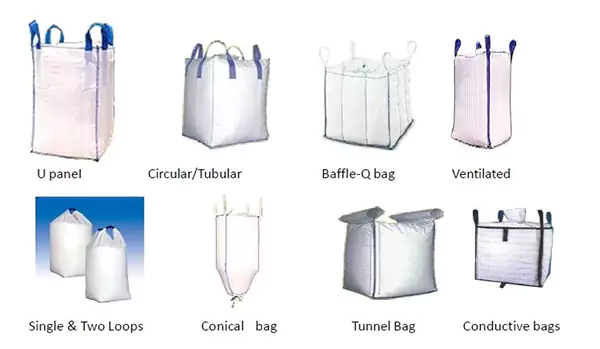The Role of FIBC Bags in Efficient Bulk Packaging Solutions
Industries that need the safe and secure transport and storage of vital commodities recognize the importance of adequate bulk packaging. The FIBC bag, or Flexible Intermediate Bulk Container, is one such option that has seen substantial uptake in recent years. Because of their adaptability, durability, and low price, FIBC bags from expert FIBC bag manufacturers are popular in many sectors, including agriculture, construction, chemicals, and food processing.
FIBC products are intended to be sturdy and practical bulk material packing. They’re crafted with woven polypropylene fabric, an ultra-durable but lightweight material. They come in a wide range of sizes and styles, making it easy to tailor them to your needs.
There are several ways in which these products contribute to effective bulk packaging strategies. They provide several advantages that help with logistics, finances, and product safety. Lifting loops or handles are fitted to the top to facilitate quick and simple transportation and loading/unloading with forklifts or cranes. The valves and spouts allow for measured loading and unloading of the contents.
A report by Data Bridge Market Research shows how rapidly the future of bulk bags is increasing year by year. The graph below shows that by 2029, the market is expected to reach a brilliant mark of 106 million USD.

In this article, we’ll look more closely at the structure, advantages, and uses of FIBC bag’s inefficient bulk packaging solutions, emphasizing their function across sectors and their impact on cost-effective and environmentally friendly packaging methods.
Style of an FIBC Bag

Woven polypropylene fabric is both lightweight and durable enough to resist significant weight. The bags may be made to order and come in various sizes, shapes, and materials to match your needs. The bag can hold multiple items because of the fabric’s flexibility.
The tops of FIBCs include lifting loops or handles that make forklifts and cranes unnecessary for moving. Filling the bag quickly and precisely is made more accessible by creating a spout or filling inlet at the top of the pack. A discharge vent or valve at the bottom of the bag makes it easy to remove the contents.
Why FIBC Bags are Beneficial
When the concern is effective bulk packaging solutions, they provide several benefits:
- In comparison to other bulk packaging options, such as rigid containers or drums, these containers provide significant savings. Because of its portability and collapsibility, transportation expenses may be kept to a minimum.
- Depending on the bag’s construction and fabric strength, FIBCs may handle loads of 500 to 2,000 kg or more. This means that they may be used to store and transport various things, from chemicals to grains to aggregates.
- They enhance the efficiency of storage space since they may be stacked and use the vertical space available. Because their cube or rectangle design may be stacked securely, minimizing the need for extra storage space.
- Along with these strong benefits, they also provide high security and protection for the goods they transport. The materials are protected from environmental hazards by a woven polypropylene fabric resistant to rips, punctures, and UV radiation. Depending on the nature of the contents, FIBCs may be fitted with liners to minimize moisture absorption, contamination, or static accumulation.
- The lifting loops or handles make it easy to carry and move around. Forklifts, cranes, and hoists can move them around during loading and unloading effortlessly. They may be manually handled when required, providing operational versatility in various settings.
- Because they may be used several times and recycled, these containers ultimately help the environment in the long run. Their durability and longevity mean they can be reused repeatedly, which helps cut down on trash. The creation of eco-friendly FIBC bags fashioned from recycled materials or biodegradable textiles is another consequence of the evolution of fabric technology.
Uses for FIBC Bags
Their adaptability makes them useful in many different fields:
Agricultural Practices
Grain, seeds, fertilizer, and animal feed are agricultural materials often stored and transported in them. Because of their huge capacity and resistance to moisture, agricultural goods maintain their quality and freshness throughout transit and storage.
Building
Building materials make use of FIBCs to transport and store. Sand, gravel, stone aggregates, etc are some building materials that you can witness around yourself. They are a practical and effective means of transporting building supplies to job sites. The building process may go faster since the bags don’t need as much physical handling and can be hoisted by cranes. A clean and orderly building site is another benefit to contain materials.
Substances Used in Medicine and Industry
The chemical and pharmaceutical sectors make substantial use of FIBC bags. To further safeguard the safety and quality of the fragile contents, the bags may be fitted with liners that provide further protection against moisture, contamination, and static charges.
Preparing and Packaging Food
They shield the food from external elements like dampness and bugs and keep it clean and sanitary. FIBCs may be ordered with food-grade liners or coatings to serve the food sector further.
Extraction of Natural Resources
In the mining and minerals business, they serve an integral purpose. These containers are built to withstand the rough terrain and heavy loads of mining operations. FIBC simplifies the loading and unloading processes in the mining industry.
Discarded Materials and Reuse
FIBC bags find widespread use in recycling and rubbish collection systems. Plastics, paper, metal scraps, and textiles are just some of the recyclables that they are used to collect and carry. The massive volume enables quick and easy rubbish collection and reduces the frequency of rubbish runs. The convenience of emptying FIBC at recycling facilities aids in the efficient handling of trash.
Conclusion
FIBC bags, or flexible intermediate bulk containers, changed the game for products packaged in large quantities in India. They are popular in many fields because of their flexible structure, low price, and multiple advantages. They provide for the secure and convenient transport of various commodities. Logistics and storage are simplified because of the bags’ long lifespan, large carrying capacity, and small footprint. More to that, the reusability and recyclability of FIBC bags are consistent with green principles. FIBC is anticipated to be prominent in the bulk packaging market as companies seek effective and dependable solutions.









